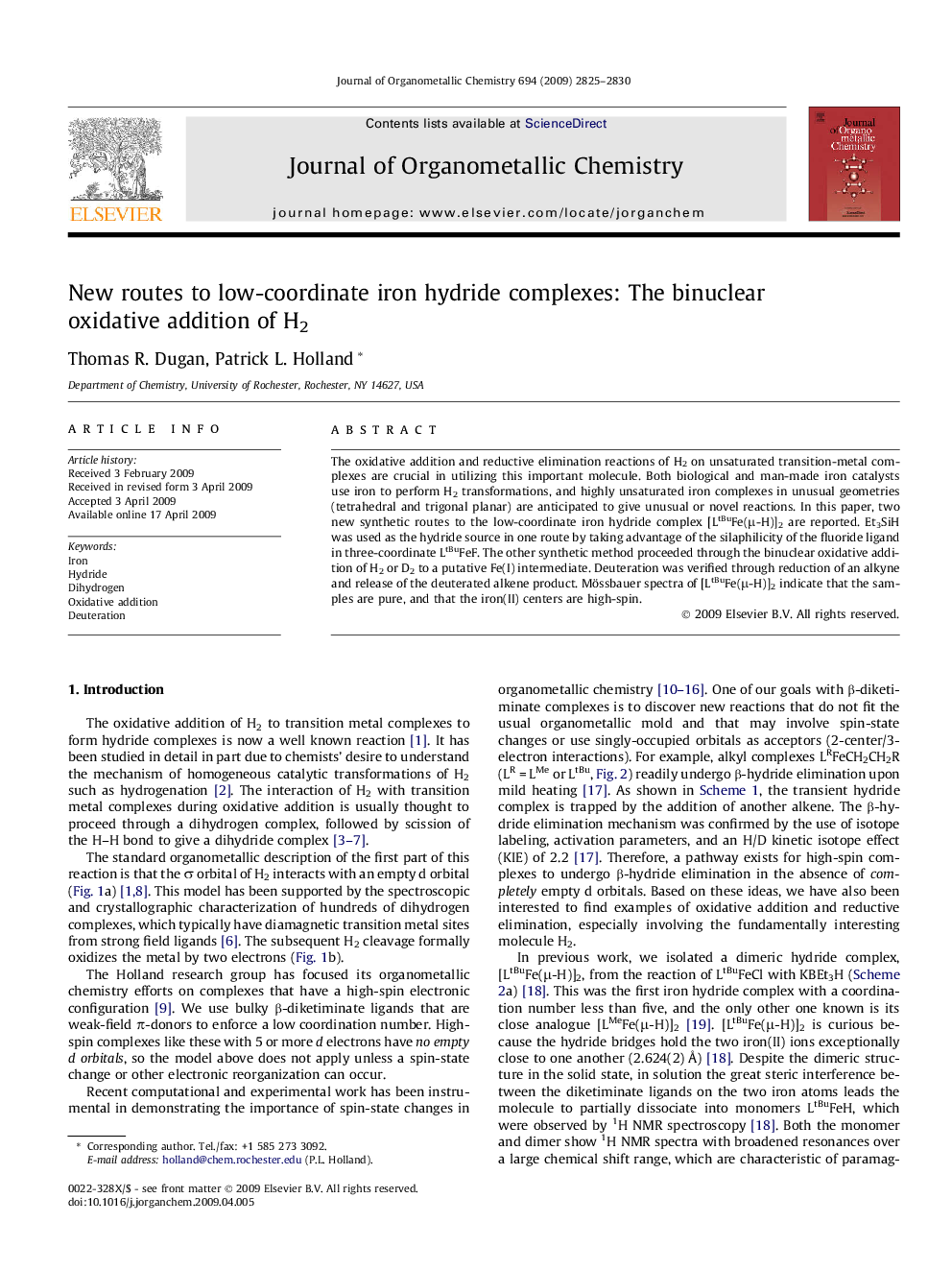| Article ID | Journal | Published Year | Pages | File Type |
|---|---|---|---|---|
| 1327334 | Journal of Organometallic Chemistry | 2009 | 6 Pages |
The oxidative addition and reductive elimination reactions of H2 on unsaturated transition-metal complexes are crucial in utilizing this important molecule. Both biological and man-made iron catalysts use iron to perform H2 transformations, and highly unsaturated iron complexes in unusual geometries (tetrahedral and trigonal planar) are anticipated to give unusual or novel reactions. In this paper, two new synthetic routes to the low-coordinate iron hydride complex [LtBuFe(μ-H)]2 are reported. Et3SiH was used as the hydride source in one route by taking advantage of the silaphilicity of the fluoride ligand in three-coordinate LtBuFeF. The other synthetic method proceeded through the binuclear oxidative addition of H2 or D2 to a putative Fe(I) intermediate. Deuteration was verified through reduction of an alkyne and release of the deuterated alkene product. Mössbauer spectra of [LtBuFe(μ-H)]2 indicate that the samples are pure, and that the iron(II) centers are high-spin.
Graphical abstractTwo new routes to [LtBuFe(μ-H)]2 are reported. Et3SiH reacts with LtBuFeF to give [LtBuFe(μ-H)]2 in 83% yield. Alternatively, binuclear oxidative addition of H2 or D2 to a putative Fe(I) intermediate gives [LtBuFe(μ-H)]2 or [LtBuFe(μ-D)]2 in ∼60% yield. Mössbauer spectra of [LtBuFe(μ-H)]2 show that the iron(II) centers are high-spin.Figure optionsDownload full-size imageDownload as PowerPoint slide
